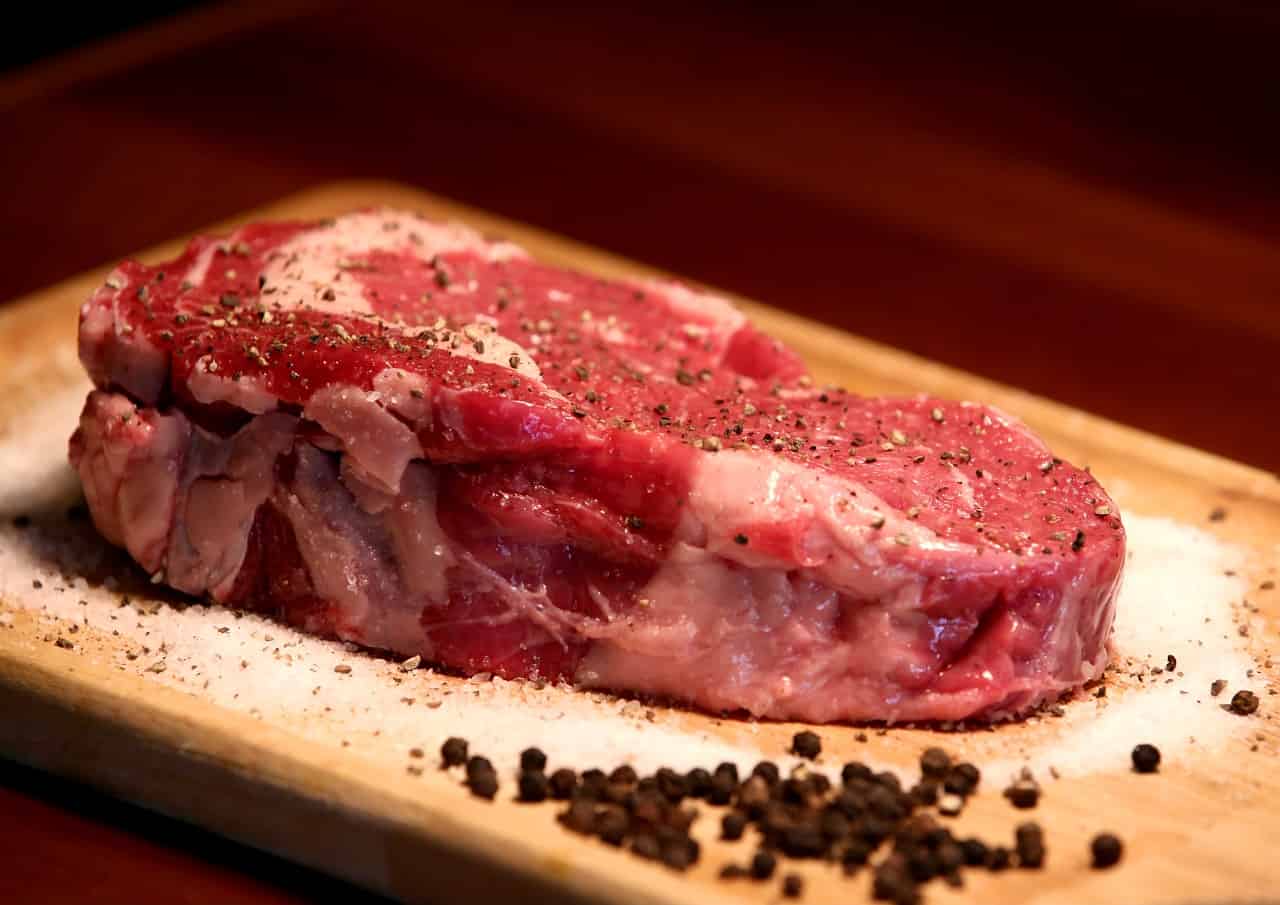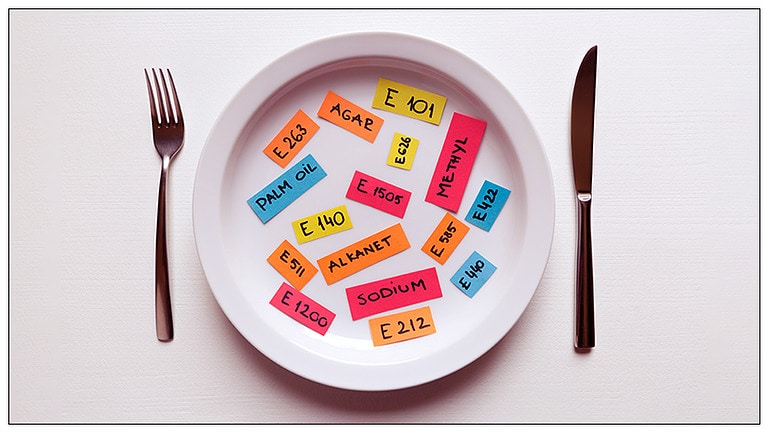The Truth About Raw Meat Nutrition: Separating Fact from Fiction
Raw meat has been a staple in human diets for thousands of years. In recent years it has become a popular topic in the world of nutrition. Some people believe that a raw meat diet is the healthiest way to eat, while others believe that it is dangerous and unhealthy. With so much conflicting information out there, it can be difficult to know what to believe.
In this article, we will be exploring the truth about raw meat nutrition, separating fact from fiction. We will be looking at the benefits and risks of a raw meat diet, as well as examining some of the common myths surrounding this way of eating. Whether you are considering a raw meat diet for yourself or simply want to learn more about this topic, this article will provide you with the information you need to make an informed decision.
The Pros and Cons of Raw Meat
Benefits of Raw Meat
Raw meat enthusiasts often tout the benefits of consuming meat in its raw form. Here are some of the potential benefits of a raw meat diet:
- Increased Nutrient Availability: Cooking meat can destroy some of the vitamins and minerals present in it. Raw meat, on the other hand, retains these nutrients, making them more bioavailable to the body.
- Improved Digestion: Raw meat is easier to digest than cooked meat, as cooking can cause the proteins in meat to denature and become harder to break down.
- Boosted Energy Levels: Some raw meat enthusiasts claim that consuming raw meat can lead to increased energy levels and improved athletic performance.
- Reduced Inflammation: A raw meat diet may help reduce inflammation in the body, as it eliminates processed foods and focuses on nutrient-dense whole foods.
Risks of Raw Meat
While there are potential benefits to consuming raw meat, there are also some risks to be aware of. Here are some of the potential risks of a raw meat diet:
- Increased Risk of Foodborne Illness: Consuming raw meat can increase your risk of foodborne illness, as raw meat can be contaminated with harmful bacteria like Salmonella and E. coli.
- Nutrient Deficiencies: While raw meat may be more bioavailable, it can also be lacking in certain nutrients that are destroyed by cooking, such as vitamin B12.
- Difficulty Meeting Nutrient Needs: A raw meat diet can be difficult to sustain, as it may be challenging to meet all of your nutrient needs without consuming a variety of foods.
- Potential for Parasites: Some raw meats, such as wild game, may contain parasites that can cause illness if consumed.
Nutritional Value of Raw Meat
Protein Content
Raw meat is an excellent source of protein, which is essential for building and repairing tissues in the body. The protein content of raw meat varies depending on the type of meat. Beef, lamb and pork are high in protein, with approximately 20-25 grams of protein per 100 grams of meat. Chicken and turkey have slightly less protein, with around 18-20 grams per 100 grams of meat.
Protein quality is also an important consideration. Raw meat contains all of the essential amino acids needed for protein synthesis in the body. These amino acids cannot be produced by the body and must be obtained through the diet. The protein in raw meat is also highly bioavailable, meaning that it is easily digested and absorbed by the body.
Fat Content
Raw meat is a significant source of dietary fat, which provides energy and helps to absorb fat-soluble vitamins. The fat content of raw meat varies depending on the type of meat and the cut. For example, beef and lamb are relatively high in fat, with around 10-20 grams of fat per 100 grams of meat. Chicken and turkey have less fat, with around 5-10 grams per 100 grams of meat.
The type of fat in raw meat is also important. Saturated and monounsaturated fats are the predominant types of fat in raw meat, while polyunsaturated fats are present in smaller amounts. Iit is important to consume raw meat in moderation and balance it with other sources of healthy fats.
Vitamin and Mineral Content
Raw meat is a good source of several essential vitamins and minerals. Beef, for example, is rich in iron, zinc and vitamin B12. Iron is important for oxygen transport in the body, while zinc is essential for immune function and wound healing. Vitamin B12 is needed for red blood cell production and neurological function.
Other vitamins and minerals found in raw meat include vitamin B6, niacin, phosphorus and selenium. However, it is important to note that the vitamin and mineral content of raw meat can vary depending on the animal’s diet and the processing methods used.
| Meat Type | Protein (g/100g) | Fat (g/100g) | Iron (mg/100g) | Zinc (mg/100g) | Vitamin B12 (mcg/100g) |
| Beef | 20-25 | 10-20 | 2.8 | 4.0 | 2.0 |
| Lamb | 20-25 | 10-20 | 1.8 | 3.8 | 2.0 |
| Pork | 20-25 | 10-20 | 0.9 | 2.9 | 0.7 |
| Chicken | 18-20 | 5-10 | 0.7 | 1.3 | 0.3 |
| Turkey | 18-20 | 5-10 | 1.2 | 2.7 | 0.4 |
Raw Meat Handling and Preparation
Safe Handling Practices
When it comes to raw meat, proper handling is crucial to avoid the risk of foodborne illness. Here are some safe handling practices to keep in mind:
- Wash your hands thoroughly with soap and warm water before and after handling raw meat.
- Use separate cutting boards and utensils for raw meat and other foods to avoid cross-contamination.
- Store raw meat in a sealed container on the bottom shelf of the refrigerator to prevent any drips or leaks from contaminating other foods.
- Thaw frozen meat in the refrigerator, never at room temperature, to prevent the growth of harmful bacteria.
- Cook meat to the appropriate internal temperature using a meat thermometer to ensure it is safe to eat.
Preparation Techniques
While some people prefer to eat raw meat, it is important to understand the risks associated with consuming raw or undercooked meat. Here are some preparation techniques to consider:
| Meat Type | Preparation Technique |
| Beef | When cooking beef, it is recommended to sear the outside of the meat to kill any bacteria that may be present, then cook it to the desired internal temperature. |
| Poultry | Cook poultry to an internal temperature of 165°F to kill any harmful bacteria. |
| Pork | Cook pork to an internal temperature of 145°F to kill any harmful bacteria. |
| Fish | Some types of fish can be eaten raw, but it is important to source high-quality, fresh fish from a reputable supplier to reduce the risk of foodborne illness. |
It is important to note that consuming raw or undercooked meat can increase the risk of foodborne illness. If you choose to eat raw meat, be sure to only consume high-quality, fresh meat from a reputable supplier and to take proper precautions when handling and preparing it.
Common Myths About Raw Meat Nutrition
Myth 1: Raw Meat is More Nutritious than Cooked Meat
One of the most common myths about raw meat nutrition is that it is more nutritious than cooked meat. While it is true that raw meat contains certain nutrients that may be lost during cooking, such as enzymes and certain vitamins, it is important to note that cooking also has its benefits. For example, cooking can help to break down certain proteins and make them more digestible for your pet.
Additionally, cooking meat can help to destroy harmful bacteria and parasites that may be present in raw meat. This is especially important for humans and pets with weakened immune systems, as they may be more susceptible to these types of infections.
Overall, it is important to strike a balance between raw and cooked meat in yours and your pet’s diet to ensure that they are receiving a variety of nutrients and that their food is safe to eat.
Myth 2: Raw Meat is Better for Digestion
Another common myth about raw meat nutrition is that it is better for digestion than cooked meat. While it is true that cooking can destroy certain enzymes that aid in digestion, it is important to note that pets have their own digestive enzymes that can help to break down food regardless of whether it is raw or cooked.
Furthermore, raw meat can actually be more difficult to digest for some pets, as it may contain tough connective tissue and collagen that can be hard to break down. This can lead to digestive issues such as constipation or diarrhea.
Ultimately, the best way to promote healthy digestion in your pet is to feed them a balanced diet that includes a variety of protein sources, both raw and cooked.
Myth 3: Raw Meat is Safe for Pets
One of the biggest myths about raw meat nutrition is that it is safe for pets to consume. While raw meat can certainly be a healthy addition to your pet’s diet, it is important to take certain precautions to ensure that it is safe to eat.
Raw meat can contain harmful bacteria and parasites such as E. coli, Salmonella, and Campylobacter that can cause serious illness in pets and humans alike. To minimize the risk of infection, it is important to handle raw meat safely and to only purchase it from reputable sources that follow strict food safety guidelines.
Additionally, it is important to ensure that your pet’s diet is balanced and that they are receiving all of the necessary nutrients they need to thrive. Simply feeding your pet raw meat without taking into account their individual nutritional needs can lead to deficiencies and other health issues.
FAQ’s:
Q. Is it safe to eat raw meat?
A. Consuming raw meat can be dangerous due to the risk of bacterial infections. It is important to take proper precautions to minimize the risk of illness.
Q. What are the risks associated with consuming raw meat?
A. The main risks associated with consuming raw meat are bacterial infections and parasites, which can cause foodborne illness.
Q. Can raw meat make you sick?
A. Yes, raw meat can cause foodborne illness, which can range from mild stomach upset to more serious health complications.
Conclusion
Raw meat has been a controversial topic for years, with many myths and misconceptions surrounding its nutritional value. However, after examining the available evidence, it is clear that raw meat can be a healthy addition to your diet if prepared and consumed properly.
It is important to note that consuming raw meat comes with certain risks, such as the potential for bacterial contamination. Therefore, it is crucial to handle and prepare raw meat carefully, following proper food safety guidelines.
When it comes to the nutritional value of raw meat, it is a good source of protein, iron, and other essential nutrients. However, it is important to choose high-quality, grass-fed meat to ensure that you are getting the most nutritional value possible.
In conclusion, while there are risks associated with consuming raw meat, it can be a healthy addition to your diet when prepared and consumed properly. By following proper food safety guidelines and choosing high-quality meat, you can enjoy the nutritional benefits of raw meat while minimizing the risks.







